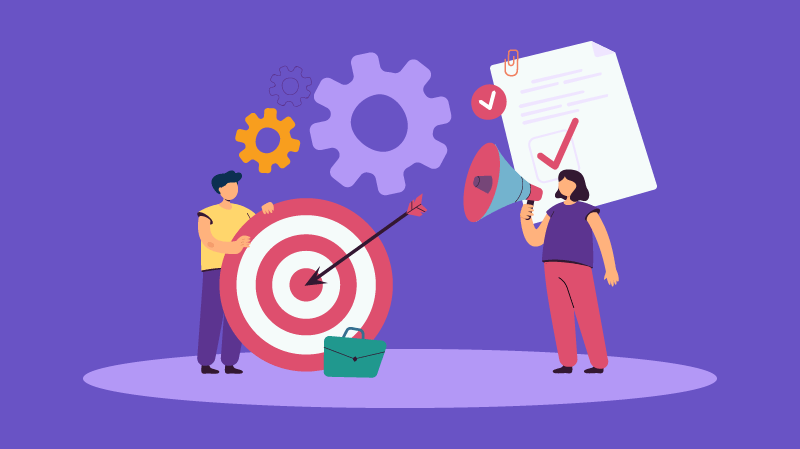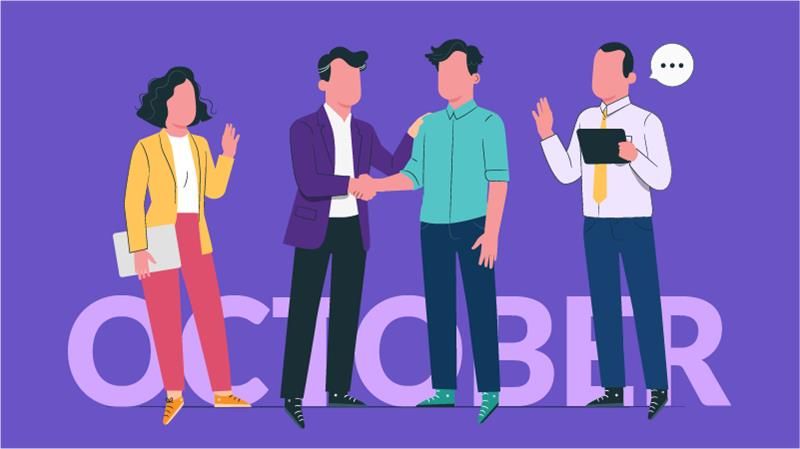6 Best Employee Engagement Models, Theories, And Frameworks For Your Workplace

A Global Employee Recognition and Wellness Platform
Employee engagement isn't just about maximizing profitability or keeping the organization running. It is about making sure your employees are happy and satisfied. But enacting this effectively poses a challenge. And that’s where research-backed employee engagement models come in.
The models serve as the foundation for fostering an engaged and motivated workforce. It provides organizations with an actionable blueprint to boost engagement in the workplace.
As organizations recognize the pivotal role of engaged employees in achieving long-term goals, the search for effective employee engagement theories has become paramount.
In this blog, we will explore employee engagement frameworks aimed at empowering your organization– because a truly engaged workforce is the cornerstone of organizational excellence.
Key Takeaways
- What is an Employee Engagement Model?
- Learning the Benefits of Employee Engagement Models
- Why are Engagement Models the Key to a Thriving Workplace?
- Explore Employee Engagement Models to Drive Employee Engagement
What is an Employee Engagement Model?
According to a Gallup report, companies with engaged workers report 21% higher profitability and scored 17% higher on productivity.
An Employee Engagement Model is a framework or strategy designed to measure, understand, and improve employee engagement and satisfaction within an organization.
Also called employee engagement theory or framework, these models examine the factors that drive organizational commitment and employee motivation. It guides companies in developing impactful policies and programs.
Furthermore, employee engagement models aim to create sustainable connections between employees and their work. They are the driving force behind workplaces where employees thrive, fostering a dynamic and positive workplace environment.
Engagement Models Key to a Thriving Workplace
Engagement models can transform a workplace into a thriving community of motivated and engaged employees.
Leading organizations apply research-backed engagement theories into the fabric of their organizational culture. These theories serve as a guiding principle, influencing leadership styles and shaping the company culture.
When implemented successfully, employee engagement frameworks can help improve employee retention, engagement, and job satisfaction.
Additionally, engagement models that nurture personal and professional growth create a workplace where individuals don't just work but flourish.
Let’s look at some of the Benefits of Employee Engagement Models:
-
Recognition and Valuation: Emphasizes recognizing and valuing employees for their contributions. This creates a sense of worth and motivation.
-
Collaboration and Teamwork: By encouraging collaboration, engagement models promote teamwork and collective achievement within the organization.
-
Innovation and Creativity: Engagement models actively involve employees in the creative process. It fuels innovation and creates a culture where fresh ideas are valued.
-
Work-Life Balance: Engagement models often address work-life balance, recognizing its importance. It implements measures that contribute to employee well-being.
-
Professional Growth Opportunities: They prioritize personal and professional growth, offering opportunities for skill development and career advancement.
-
Alignment with Organizational Values: Helps align employee engagement initiatives with organizational values. It ensures a cohesive workplace culture that resonates with the company's vision.
Recommended Read: Best Employee Engagement Software for Employee Surveys, Wellness, Recognition, and more
6 Best Employee Engagement Models For Thriving Workplace
1. Aon Hewitt Employee Engagement Model
The global consulting firm Aon Hewitt has made significant contributions in the field of employee engagement.
The Aon-Hewitt model represents a strategic approach to managing and optimizing employee engagement within an organization. Their model strongly emphasizes connecting employee engagement to tangible business outcomes.
This employee engagement framework examines engagement drivers across six key focus areas:
-
Work: This encompasses the nature of employees' tasks, roles, and responsibilities. It evaluates how meaningful and challenging the work is and individuals' autonomy and control over their tasks.
-
People: Focuses on interpersonal relationships, such as employer-employee relationships within the organization. It also examines the quality of relationships between employees and their colleagues, supervisors, and team members. Effective communication and collaboration also fall under this category.
-
Quality Of Life: It encompasses work-life balance and the overall well-being of employees. This also includes job security and the flexibility of work arrangements to support a positive quality of life.
-
Company Practices: Evaluates organizational policies, practices, and procedures in place. This includes performance management, Diversity & inclusivity, and effectiveness of communication.
-
Total Rewards: Examines the compensation and benefits provided by the organization. This includes salary structures, bonus programs, health benefits, and any other rewards offered to employees for their contributions.
-
Opportunities: Focuses on the growth and development prospects available to employees. This includes opportunities for skill development, career advancement, and organizational learning.
These drivers create an engaged workforce that:
-
Say: Engaged employees become advocates for the company.
-
Stay: Engaged employees are committed and loyal to the organization, reducing turnover rates and contributing to a stable workforce.
-
Strive: Engaged employees are highly productive and willing to go the extra mile, leading to increased performance and innovation.
2. Zinger Model of Employee Engagement
Introduced by Psychologist David Zinger, the employee engagement model focuses on improving employee engagement by building interpersonal relationships.
The model provides a roadmap for managers seeking to improve employee engagement. It focuses on tangibly improving individual, team, and organizational performance through interconnected components.
At its core, the Zinger model is built around four key elements represented by the acronym CARE:
- Connection - Enabling relationships between staff and company goals
- Authenticity - Building trust through genuine policies and practices
- Recognition - Valuing employee contributions with meaningful rewards
- Engagement - Maintaining participatory, energetic work environments
The Zinger model also conceptualizes employee engagement in the form of a pyramid with four tiers.:
Bottom Level: Employee Essentials
The foundation focuses on basic human needs for performing well:
- Well-being – Promote healthy work-life balance and psychological safety
- Energy – Monitor and optimize energy levels; prevent burnout
- Meaning – Communicate job purpose and value
- Strengths – Enable employees to apply their unique talents
Middle Level: Workplace Relationships and Recognition
With essentials ensured, the next level facilitates workplace relationships:
- Relationships – Encourage collaborations and friendships
- Recognition – Implement authentic peer recognition programs
- Presence – Foster daily attentiveness and understanding
Top Level: Impactful work and progress
This tier enables collective advancement:
- Performance – Set clear objectives and empower achievement
- Progress – Systematically track and communicate development
Top of the Pyramid: Achieve Results
The end goal is to facilitate a high level of employee engagement and active participation among employees.
This intentional bottom-up structure shows leaders that employee engagement is not a single step but an ongoing journey to elevate human potential and business success.
Zinger's Pyramid is constructed with 10 Adaptable blocks, designed to be rearranged as needed, offering flexibility in its structure.
3. Gallup Employee Engagement Model
After several years of study spanning millions of participants, the distinguished research and consulting firm Gallup developed an employee engagement model known as the Q12 Pyramid.
The Q12 engagement model conducts surveys and assessments to measure engagement levels. It provides organizations with actionable insights to enhance employee engagement. The survey questions gauged how engaged, disengaged, or neutral the workforce is in an organization.
The model quickly proved the gold standard in differentiating a productive work environment from a non-productive one based on the response to the 12 core questions. That includes:
- Do you know what is expected of you at work?
- Do you have the materials and equipment to do your work right?
- At work, do you have the opportunity to do what you do best every day?
- In the last seven days, have you received recognition or praise for doing good work?
- Does your supervisor or someone at work care about you as a person?
- Is there someone at work who encourages your development?
- At work, do your opinions count?
- Does the mission/purpose of your company make you feel your job is important?
- Are your associates (fellow employees) committed to doing quality work?
- Do you have a best friend at work?
- In the last six months, has someone at work talked to you about your progress?
- In the previous year, did you have the opportunities to grow and learn?
These employee survey questions help to gauge various aspects of an employee's experience in the workplace and their level of engagement. The responses give an insight into the overall satisfaction, commitment, and well-being of employees within an organization.
4. Schmidt Model of Employee Engagement
Developed in 2004, the Schmidt model places value on carefully recruiting and retaining people who fit the company culture.
According to Schmidt's framework, the work environment becomes more positive if a business recruits people with the right expertise and competencies.
This model best suits organizations valuing a specific work culture and a supportive network of like-minded employees.
The Schmidt Model defines employee engagement through 4 key elements:
-
Career - Employees need to see a clear career path and opportunities for advancement.
-
Community - Employees need to feel a sense of connection with their colleagues.
-
Fairness - All employees want to be treated justly and compensated appropriately based on their contributions.
-
Values - Employees need to feel personally connected to their company's larger purpose or mission.
Companies can maximize employee engagement, as conceptualized in the Schmidt model, by finding and retaining people who align with the organizational culture.
5. Deloitte Model of Employee Engagement
The global consulting firm Deloitte developed the model to drive employee engagement and make work highly appealing by focusing on the company culture.
This research-based model identifies five core elements that Deloitte has found most critical for nurturing engagement, each enabled by specific actions:
1. Meaningful Work
The Deloitte model prioritizes purpose-driven employee engagement by providing employees with a sense of autonomy. It focuses on employees' need to feel their work has a purpose and are making a valuable contribution.
The framework prioritizes hiring individuals who resonate with its company culture, ensuring a connection to shared values and increased engagement.
2. Supportive Hands-on Management
Hands-on management acknowledges the significant impact managers have on engagement. Effective managers coach effectively and set clear goals by implementing objectives and key results (OKRs) instead of micromanaging.
It is important to note that teams stay motivated when managers set a positive example, fostering unity toward common goals.
3. Positive Environment
A positive environment enables people to thrive professionally and personally. Deloitte's model calls for flexible work options so employees can maintain a work-life balance.
4. Growth Opportunities
This model includes a robust development strategy, encompassing training, promotion opportunities, and a learning culture to keep employees engaged. It also helps them continuously grow in their professional roles. This, in turn, contributes to the overall success and adaptability of the organization.
5. Trustworthy Leadership
Inspiring leaders who communicate purpose, invest in people and walk the talk drive commitment. Furthermore, it leads to engaged employees who perform better, reducing the turnover rates.
Additionally, leaders who consistently demonstrate the values and behaviors they expect from their team establish credibility and trust.
With these 5 core elements, the Deloitte model provides a comprehensive framework scalable for large companies and practical tactics for all organizations. It offers a research-backed blueprint for building a highly motivated workforce by focusing on the areas that matter most.
6. Kahn's Model of Employee Engagement
Developed by Psychologist William Kahn, the model focuses on the psychological aspects of engagement. It emphasizes the importance of employees' emotional and cognitive connection to their work.
Kahn's model emphasizes the importance of creating a work environment that fosters “personal engagement.”
Organizations are encouraged to go beyond merely providing job satisfaction and focus on creating an environment where employees can bring their best selves to work.
Kahn identifies three psychological conditions that are necessary for employees to be fully engaged:
-
Meaningful Work - Employees need to feel that their work contributes to a larger purpose and has a meaningful impact. When employees find meaning in their work, they are more likely to be personally engaged.
-
Safety - Employees need to feel comfortable taking interpersonal risks. This will help them be authentic at work without fear of negative consequences.
-
Opportunities for Growth - Employees need to have the headspace to immerse fully. Employees are more likely to be engaged when they see a clear path for personal and professional growth within the organization.
According to Kahn's model, employees will be fully absorbed and engaged in their roles when these conditions are met. If any are lacking, employees tend to withdraw and disengage from work. It believes that meeting psychological needs leads to better engagement and performance.
Moreover, Kahn also identified three principal dimensions of employee engagement. They are:
Emotional Engagement
This aspect refers to the emotional connection that employees have with their work. It includes employees' sincere interest, enthusiasm, and passion for their tasks and responsibilities.
Cognitive Engagement
Cognitive engagement involves the degree to which employees are mentally absorbed and invested in their tasks. When cognitively engaged, employees are likely to think about and contribute ideas to improve their work actively.
Physical Engagement
Physical engagement refers to the extent to which employees invest their physical energy and effort into their work. This involves being actively involved in tasks, contributing proactively, and demonstrating physical presence in the workplace.
Bottomline
Building a successful employee engagement plan involves a thoughtful and strategic approach. Consider the model that works for your organization and tailor it to your needs. It will pave the path for your organizational excellence.
Moreover, for an elevated approach to employee engagement, consider leveraging innovative platforms like Vantage Circle, designed to connect and engage your workforce.

















